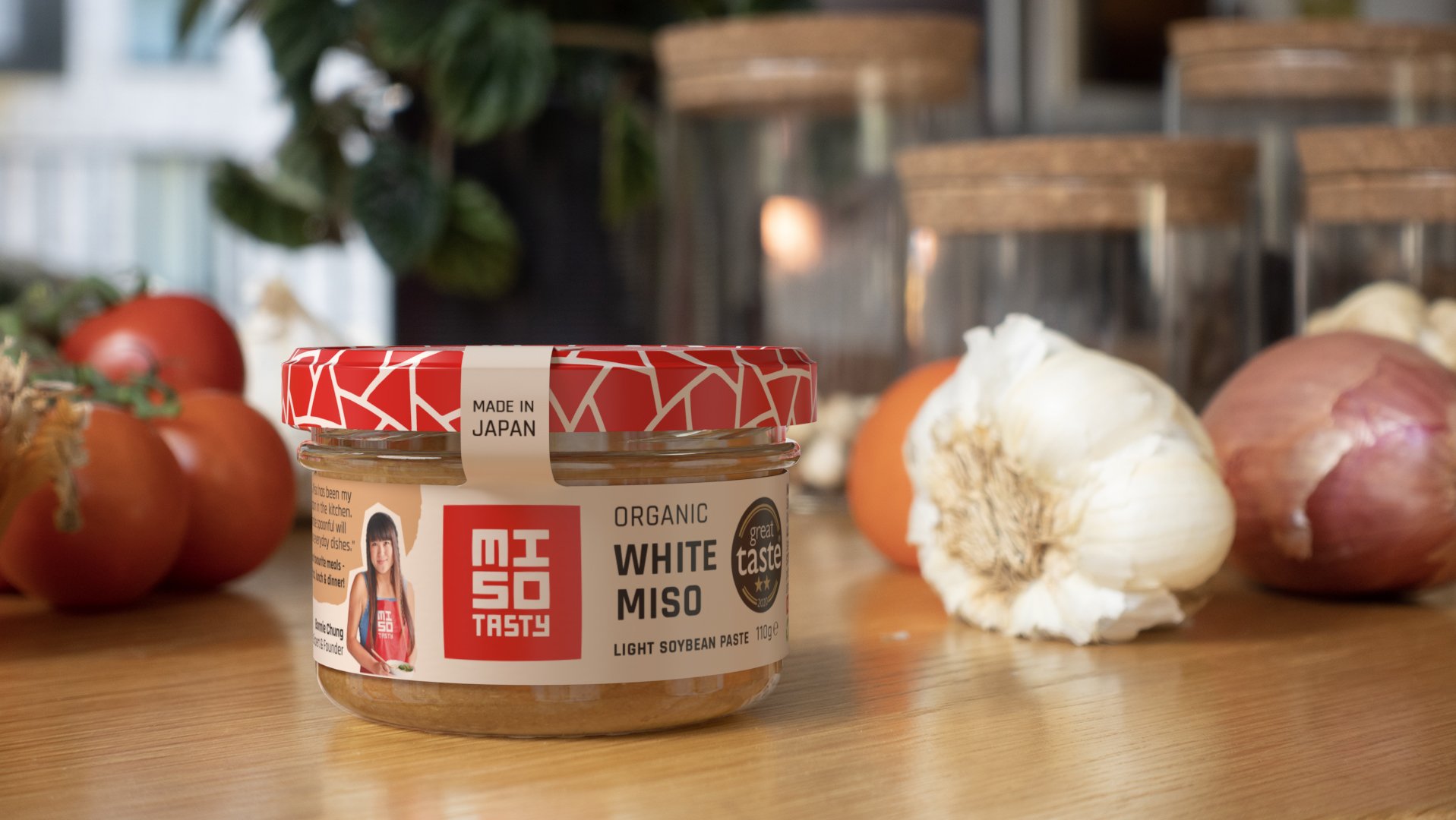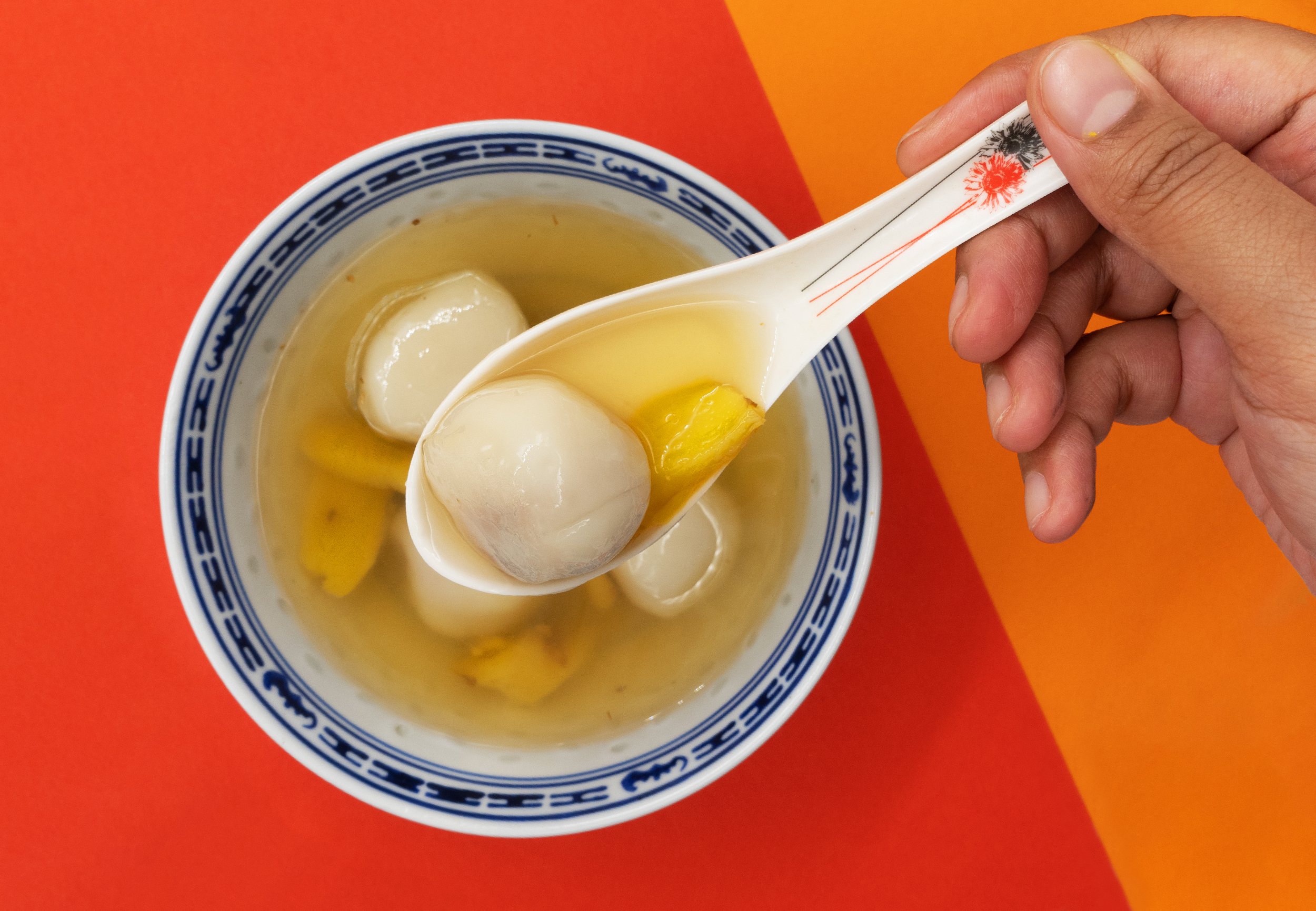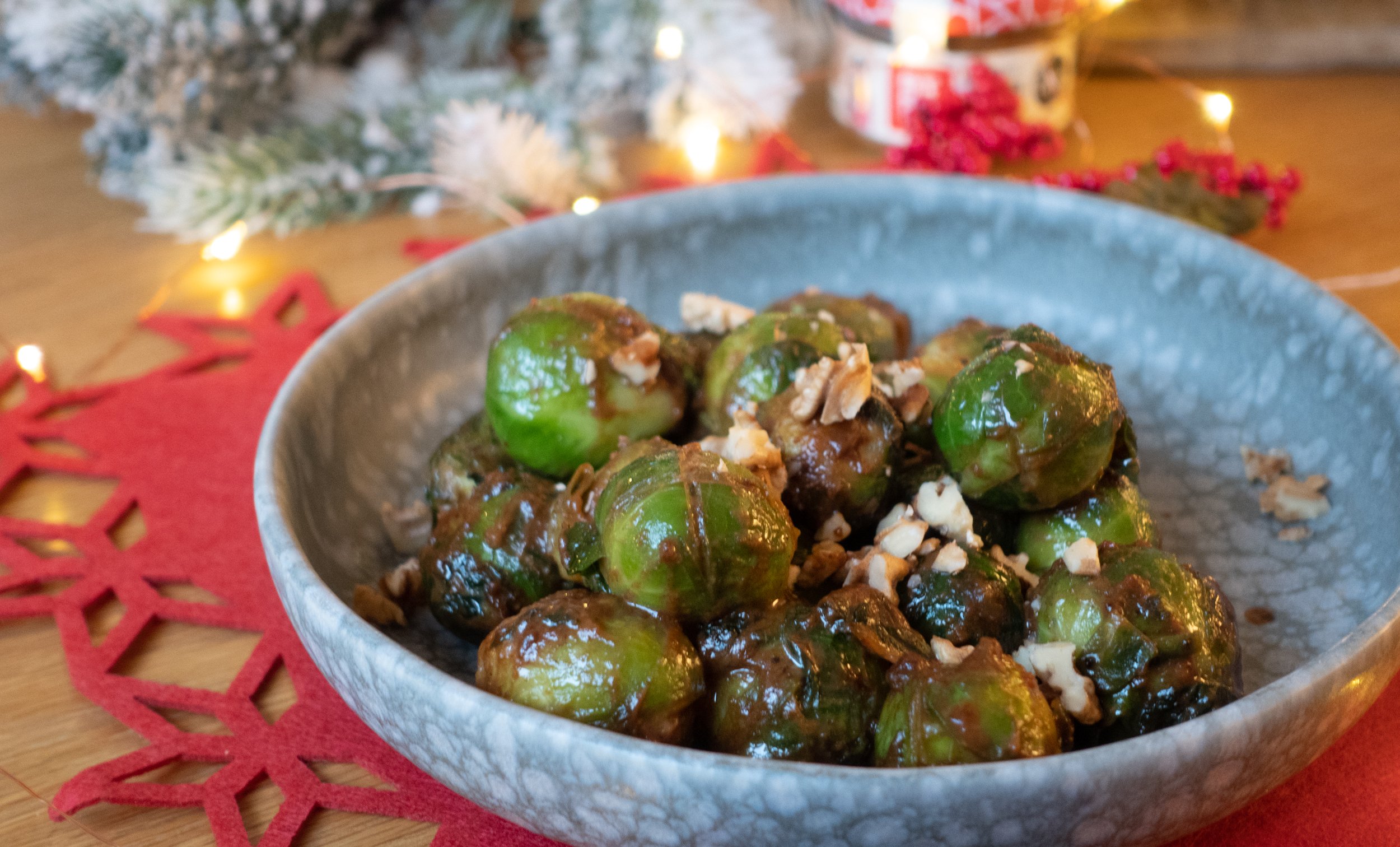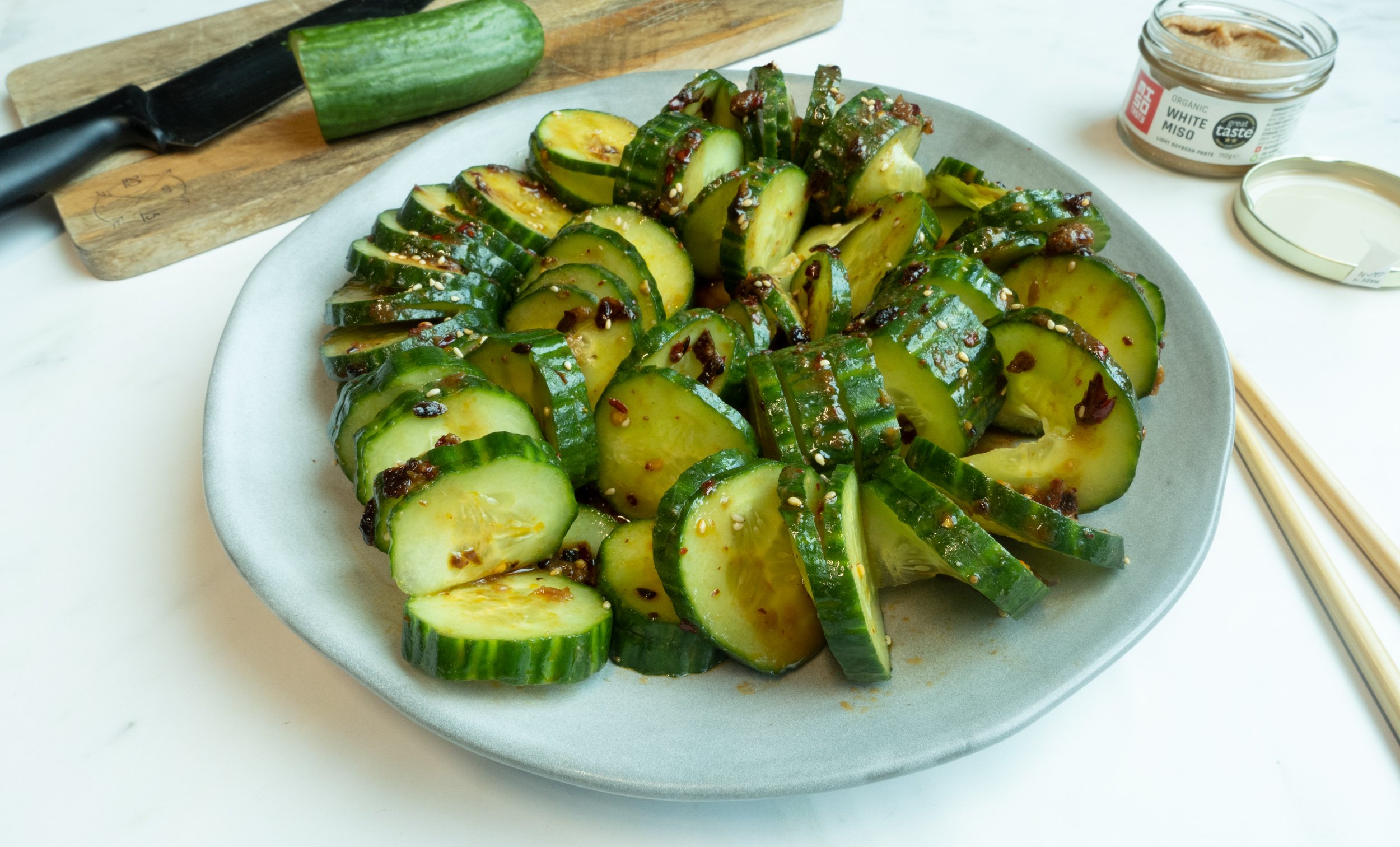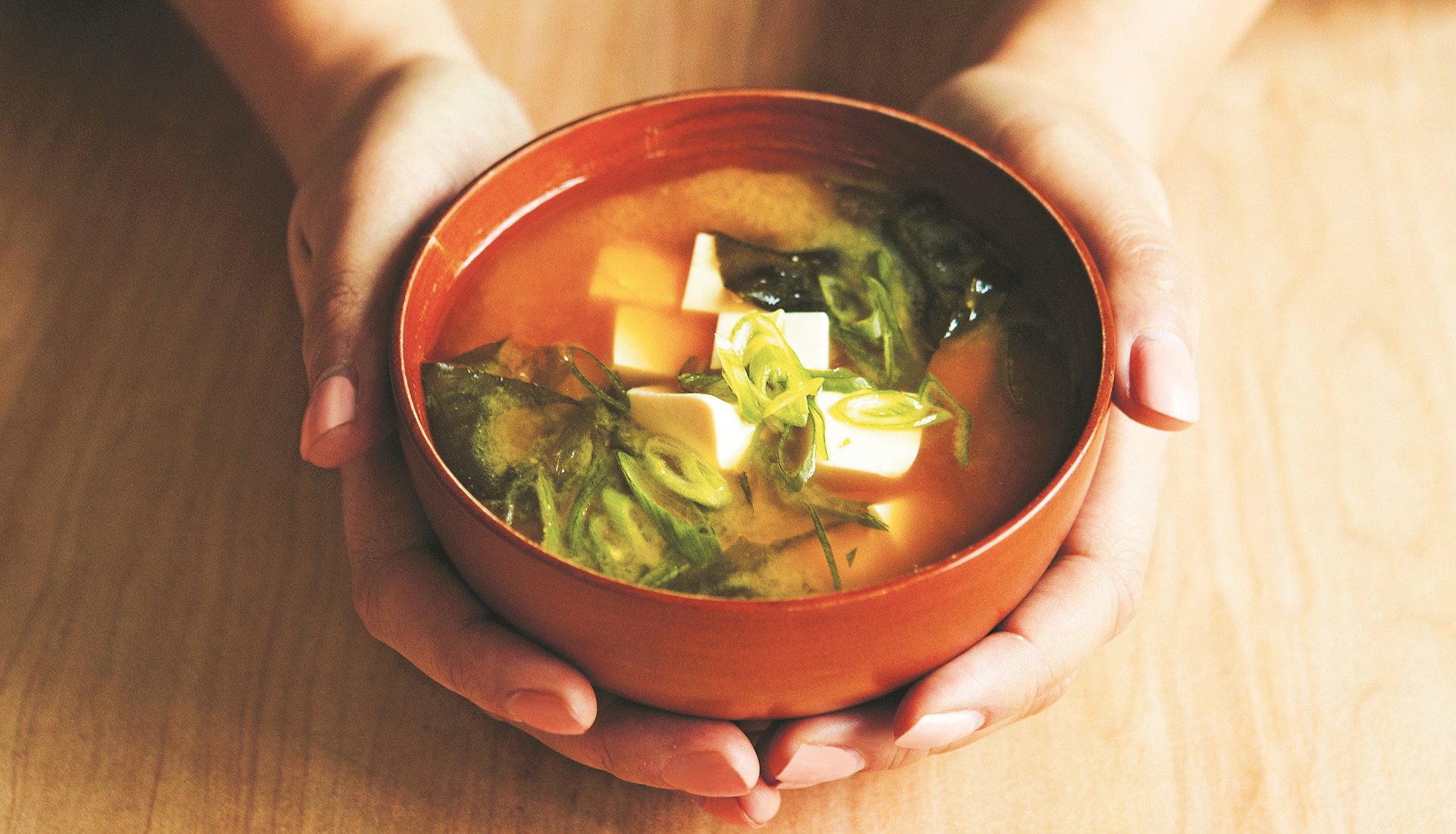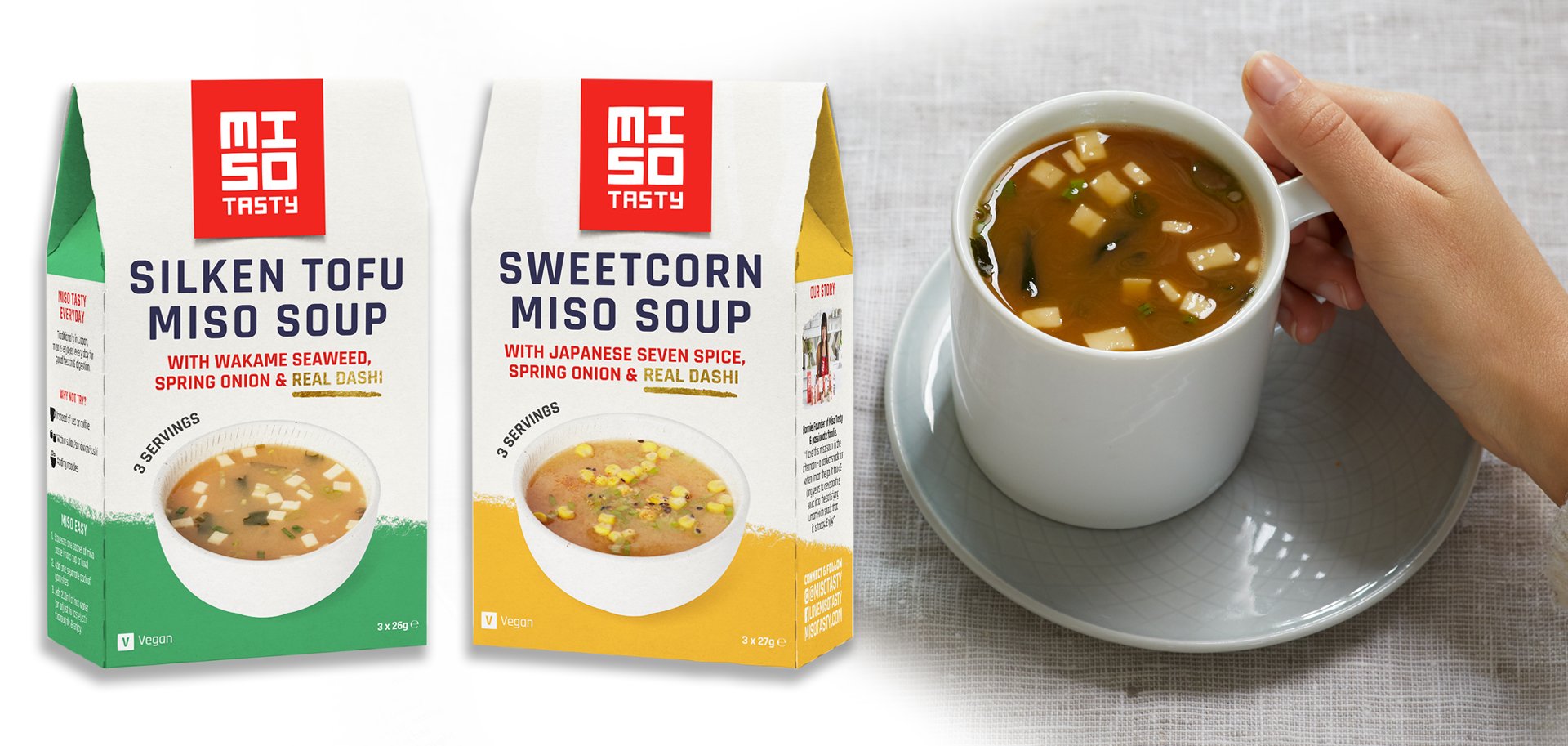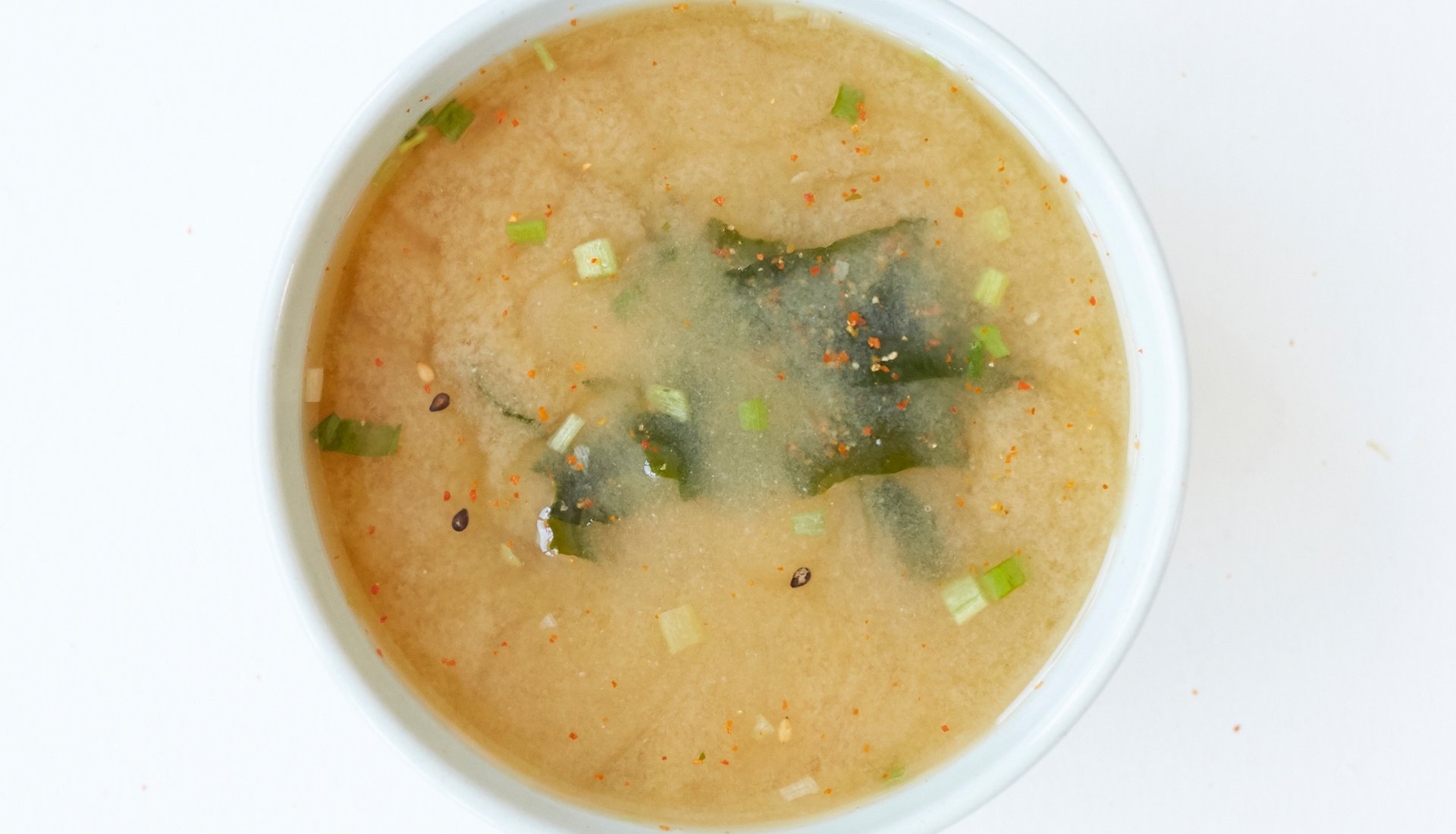5 Rules For Cooking With Miso Paste

Having cooked with miso for many years, I have come to know some common mistakes that ruin a perfectly good dish. To save you from these, make sure you are familiar with these 5 rules before you begin.
1. AVOID BOILING MISO
The number one mistake! The aromatic qualities of miso – as well as some of the nutritional benefits – are damaged when boiled. This is why miso is traditionally stirred in at the final stage of cooking, either over a gentle simmer or heat with turned off. If it is added at the start of cooking and boiled, the flavours lose there subtle of sweet and savoury tones and you are left with a much more one-dimensional taste.
2. STRAIN MISO FOR SOUPS AND BROTHS
This is an incredibly important step when miso is added at the end of cooking. Miso is a stubborn thing that doesn’t soften quickly with heat. So, if you simply try to stir it into liquid, you will be faced with lumpy miso in your broth. Guests might then be greeted with a less than pleasant sharp-salty nugget in their bowl that refused to dissolve. In all my soup and broth recipes, I advise that you strain the miso into the broth. You can buy a Japanese strainer or place the miso paste in a separate bowl and add a ladleful of stock from the pot, then whisk until smooth before pouring back into the main pot.
3. THIN MISO BEFORE MAKING DRESSINGS & SAUCES
Unlike most salad dressing ingredients, which you can throw into a bottle and shake, miso would remain lumpy, clinging onto your salad leaves in a rather unappetising way. I recommend that you thin the miso first with another liquid – perhaps olive oil or sake – in a bowl with a spoon or a small whisk.
4. WIPE OFF EXCESS MISO MARINADES
Miso makes a wonderful marinade but being composed primarily from soybeans doesn’t melt. Many miso marinades also contain sugar, so have a tendency to burn. This can create a great tarring flavour such as in grilled cod miso… but there is a fine line between smoky umami flavours and a bitter coating that ruins a dish, so keep an eye on the heat. My trick is to blot marinated items with a kitchen paper before putting them in the oven, grill or pan, leaving the thinnest layer behind; not cooking them dripping them with sauce as a barbecue marinade. With miso marinades, less is more, trust that the flavour has already penetrated the meat, fish or vegetables.
5. STORING MISO – KEEP IT COVERED
Miso should be stored in a covered container and to maintain its colour and flavour, refrigeration is best. As a general rule, the lighter the colour and flavour, the more careful you will need to be and refrigeration is best.
Sweet miso should be consumed within three weeks of opening, white miso within 3 months. Darker misos, such as barley, brown rice and red miso keep for at least 6 months, and soybean miso for 12 months. Beyond these periods the miso wont spoil, but the flavour and colour will change becoming less aromatic. Soybean miso, which contains much less salt becomes harder too.If you see your miso forming white or green mould on top, simply skim off as you would with jam. Pinkish mould are a more serious matter and you will need to scrape very deeply and use the remaining untainted miso within the next day or too, or throw out.

For my fifth feature of Channel 4's Sunday Brunch, I was delighted to be invited on for their Mother's Day special! It was so lovely to be back on the show - as always the hosts Simon and Tim welcomed me with open arms and what a jam-packed guest list! I am a huge fan of Lucy Beaumont as well as Edith Bowman so I was thrilled to be cooking for them!
In January of this year, Miso Tasty's founder, Bonnie Chung was interviewed by Zoe Denenberg for Epicurious about miso paste and what to look out for when shopping for it. To read the full article and learn more about this versatile ingredient, follow the link to Epicurious.
In Japan and across Asia, bento boxes are prepared for children by their parents to be eaten at school, at events and picnics. It is often a way for mothers to show their love for their children by making appetising and nutritious meals in a box.
Miso Tasty's Bonnie Chung was featured in an International Women's Day piece in the Express, on her decade in building up Miso Tasty, and her plans for the future.
When you've had a busy day, sometimes we just need something quick and comforting for dinner, that's fuss-free, but uncompromising on flavour.
For our first ever collaboration product, we are so excited to create this limited edition cooking paste with the wonderful people at Belazu - Miso Harissa!
A chance meeting at a wedding, Belazu’s development chef Henry Russell and Miso Tasty’s founder Bonnie Chung decided to make the collaboration happen…
What a blast it was to be back on Sunday Brunch this weekend!
This was my fourth time on Sunday Brunch, and I ABSOLUTELY LOVED IT! What a wonderful crew! Miquita Oliver and Tim Lovejoy are always such welcoming hosts and the guests this week were hilarious! They devoured the dishes very quickly and it was such a pleasure to feed Aston Merrygold, Kerry Howard, Dave Gorman and Nadia Rose. They were up for trying everything!
From London to Melbourne, our miso pastes are now available from over 300 COLES SUPERMARKETS, across AUSTRALIA!!
We are so delighted to launch our signature miso pastes into Sainsburys in the UK!
From today, you will be able to find our miso pastes in 525 Sainsbury’s stores including over 100 convenience Sainsbury’s Locals too!…
With phase 1 of the Elizabeth line scheduled to open on the 24th May (Paddington to Abbey Wood) we wanted to celebrate by sharing with everyone some of our favourite restaurants, best places to eat and places we want to try along the new purple line. Being Londoners, we don’t mind walking to get to our food, but for this, the only rule is that they need to be within 15 minute walking distance from the station, any further and we’ll begin to get #hangry!
We love this article in The Independent today about how geneticist Professor Tim Spector wants to transform how we approach eating, by telling us to stop cutting out foods. Instead, to nourish our gut with fermented foods like miso, unpasteurised cheese and yoghurts in order to look after our digestion system.
It was such an incredible experience, and the team there are so slick - they really look after you and help you prepare well for the show. I chose a dish I love and make regularly so that I could be as relaxed as possible on set. Miso Butter Mushrooms with Whipped Tofu, served with soft boiled eggs for an umami rich brunch. Did I mention that the show was star-studded?! That's right!! There was the superstar Lucien Laviscount from Emily in Paris and Bridgerton...
It is with much excitement and apprehension that we prepare to launch a sister brand to Miso Tasty! Welcome to the world...... Tofu Tasty!
Tofu Tasty is of course a brand that is inspired by the title of my second book. I am passionate about sharing interesting Asian ingredients that I love, and bringing it to the masses. Taking the fear out of using the many cupboard staples that have sustained millions of Asian kitchens for thousands of years.
Miso Soup is the ultimate winter warmer – a healthy, tasty Japanese soup that soothes the soul on a cold day!
The great news is it is really easy to cook a classic miso soup from scratch. Once you have that nailed, miso soup (or soups with a miso base) are fun to customise by adding extra ingredients or additional toppings.
I wasn't sure whether I was going to like the range of wacky miso Kultured London brought for me to try, but DAMMIT, they were DELICIOUS! My 2 favourites were the Greggs Sausage roll miso... and surprisingly, the MCDONALD’S HAPPY MEAL MISO! Yes, you really can miso almost anything!! You might have spotted Jonathan recently on Jamie Oliver show together with his famous bacon miso!
Our friend’s over at Stylist Magazine give us a quick history lesson on the origins or ramen and curates a selection of recipes that will surely tickle your tastebuds.
If you fancy slurping up some deliciously heartwarming noodles soup this week, follow the link below for recipes from Atsuko Ikeda and Tim Anderson as well ad Bonnie Chung from her new cookbook Tofu Tasty.
Don’t forget to let us know your favourite ramen noodle recipe in the comments below.
Thank you so much to everyone who tuned in to Channel 4’s Sunday Brunch this weekend, where I shared 3 vegan tofu recipes with the show’s presenters, Simon Rimmer and Miquita Oliver. The support has been incredible! I am very touched and I really hope that tofu starts finding its way onto more people’s plates this year!
I made Curried Coronation Tofu Sandwiches, Sweet and Spicy Tofu knots, and a Matcha Tofu Cheesecake. In the spirit of Veganuary, I made all these dishes vegan if they were not already.
It was brilliant to be back – It was my second time on the show and the guests Ellie Taylor and Ella Henderson were absolutely delightful. I loved what they said about the dishes, and hope they try to recreate them themselves.
Kick start the celebrations with these 3 super quick and tasty party canapé ideas to serve alongside the bottle of bubbly. Every party needs these finger licking appetisers to get the party going featuring Yuzu Salmon Blinis, Miso Tomato Bruschetta and sticky Teriyaki Cocktail Sausages!
Miso Tasty are pleased to announce the launch of their new range of vegan Miso Soups made with real Japanese dashi, which have just launched in Waitrose and Amazon and soon at Ocado.
I am so thrilled to be featured in Stylist Magazine’s Stylist Loves series featuring 3 of my favourite tofu recipes from my new Tofu Tasty Cookbook.
It was so much fun writing this cookbook, I can not wait for you to try some of the recipes. Head on over to stylist.co.uk for a little taster! There you will find my recipes for Bookshop Katsu, Korean Tofu Stew and Tofu Doughnuts with Miso Caramel. If you do try them out, let me know what you thought of them in the comments below or share your creations on social… don’t forget to tag us @misotasty.
It was a dream come true when my food hero, Nigella Lawson, reviewed Tofu Tasty, my new cookbook which was released earlier this month. She was the reason why I really started to enjoy cooking during my university years… and her shows are timeless!
Miso paste is naturally and always vegan. The key ingredients are actually quite simple vegan ingredients, but the transformation they go on is extraordinarily; the fermentation process takes the humble soybeans, salt and rice koji to an incredibly complex, even meaty taste!



